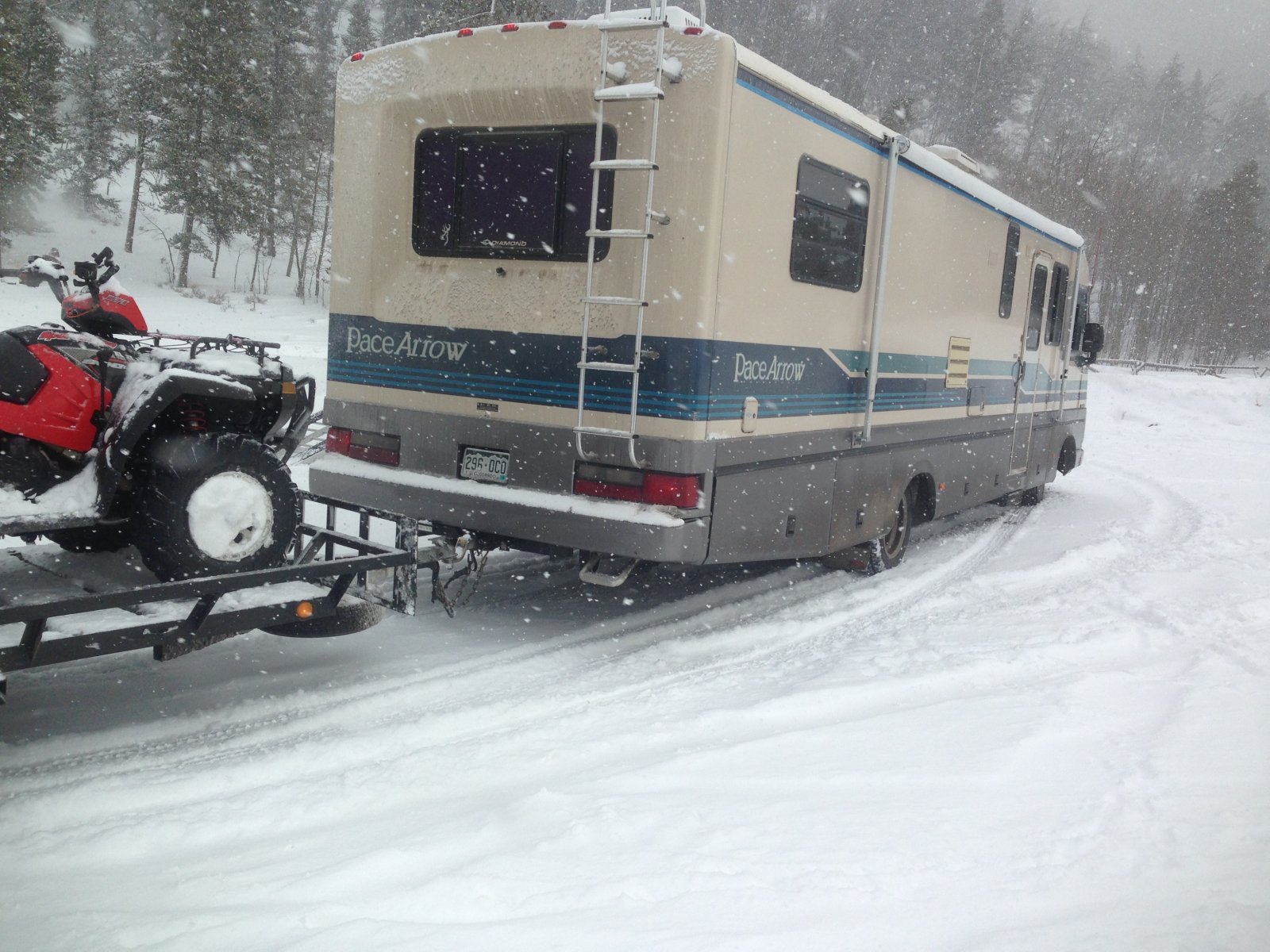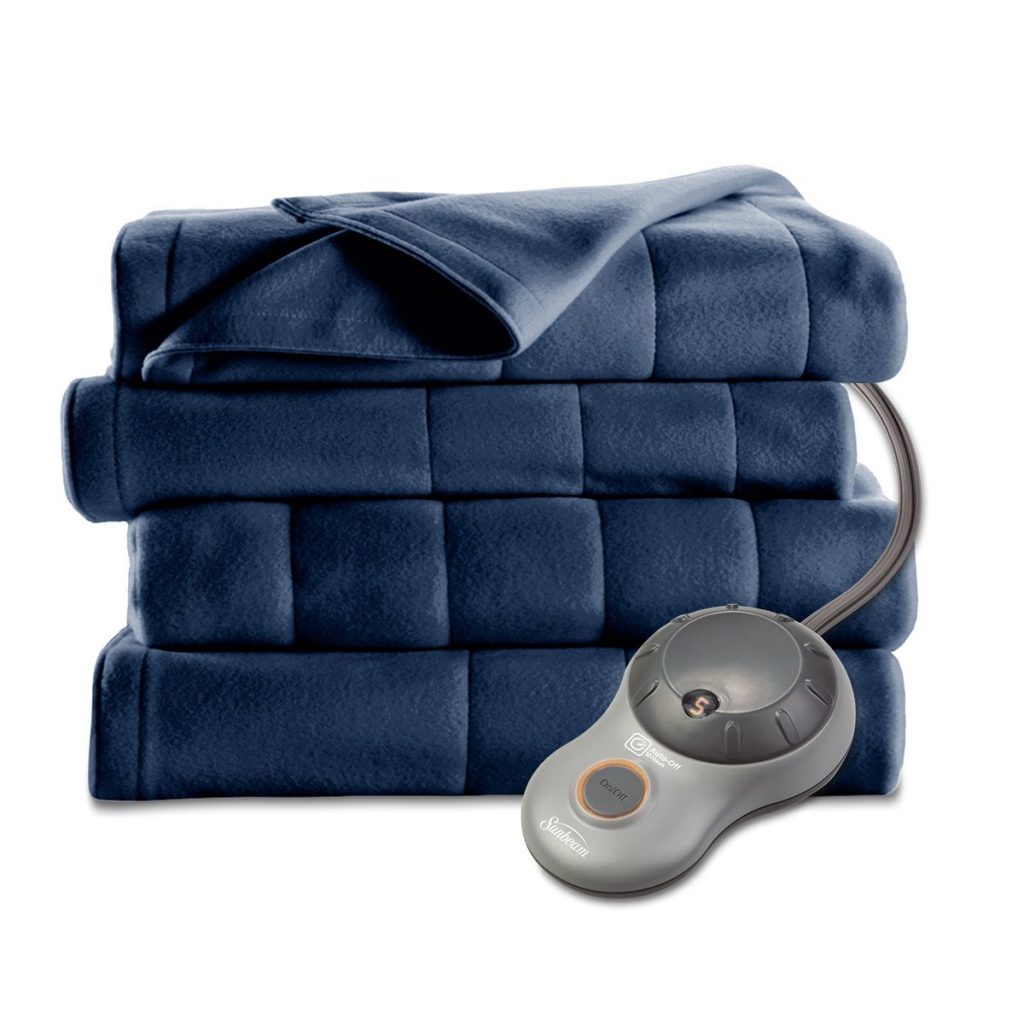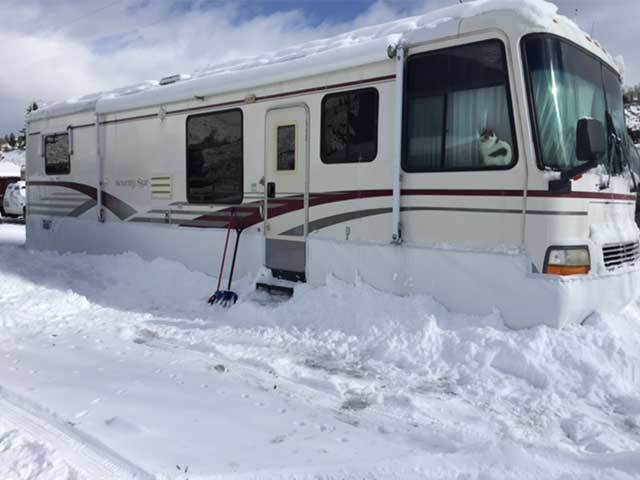Regardless of where you go this winter, cold snaps are inevitable. The good news is you can do something to prepare for those brisk days. Here are three ways to keep your RV warm in winter.
1. Invest in a secondary heat source
Ditch the expensive and dangerous space heaters for a secondary heat source. In his RV Life article “How To Avoid Winter Camping Problems In Your RV,” boondocking expert Dave Helgeson suggests a catalytic RV heater or an oil-filled electric heater.
“Your built-in forced-air furnace should always be the primary source as the ducts are routed to keep the plumbing from freezing and keeping the occupants warm. Further, a secondary option are oil-filled electric heaters.
They emit a mild radiant heat, are essentially noise-free and present little fire hazards. Catalytic safety heaters too, which run on propane rather than electricity, offer radiant heat and operate safely below the combustion level of flammable materials.”
2. Get an electric blanket
Don’t want to invest in an extra heater? If you’re plugged in, it’s an easy solution to keep warm in your RV. According to Russ and Tina DeMaris’ RV Life article “Keeping Warm in Your RV,” an electric blanket can do the job and save money too.
“Here’s the skinny: A typical queen-sized electric blanket has a draw of 200 watts, and an estimated duty cycle of 50 percent, meaning on a cold night, the blanket is “on” and consuming 200 watts half the time. For a 10-hour night, that would mean a power consumption of 1,000 watts (or one kilowatt hour) based on a formula of 200 watts x 10 hours x the 50 percent duty cycle.
A space heater keeping their bedroom warm for 10 hours would consume 1200 watts with a 50 percent duty cycle, or a total of 6,000 watts. With electricity running about a dime a kilowatt hour, using that electric blanket costs a dime a night, while the space heater costs 60 cents. It doesn’t take long to see the payoff.”
3. Skirt your RV
Are you a snow lover who wants to live in your RV in snowy weather? If so, you’ll be smart to follow the tips from Ching and Jared, aka LiveSmallRideFree.com. Their helpful DoitYourselfRV article “How to Skirt Your RV in the Winter to Keep it From Freezing” shares the ins and outs of skirting your RV with insulation material.
“This is one of the most important things to do if you’re staying somewhere that gets below freezing (don’t forget wind chill) for long periods of time. Especially if your rig doesn’t come with a winterized set-up that includes a covered and sometimes heated underbelly, heated tanks, etc.
Even if your rig does come ready to survive the winter weather, it’s still smart to skirt your rig because it helps keep it warmer inside the rig, which means you don’t have to run the heater as much.”
If you plan to continue RVing in winter, get ready now with these preparations to keep your RV warm wherever you travel or stay put for the season. For more great tips, the iRV2 Discussion Forums are another great resource for even more winter RVing ideas.
AirSkirts
An inflatable solution from AirSkirts™️ uses the air in their inflatable pods for great insulation, but then readily deflates at the end of the season for easy storage. Air can be a great insulator, and even those campers in hot climates benefit from AirSkirts™️ to trap the cooler air underneath their RV.





We lived in our 35′ Itasca in November and December while our house was being built with temps in the 30’s and some snow here in VT. The gas furnace running and 3 electric heaters running and it was still cold. I had pillows in ceiling vents to kill those breezes. Very glad when house was completed. It is a LOT cheaper to heat a house than a motorhome.
Wow I keep my rig at night @ 65o And @ 78o during the day but i do not add any extra clothing ! Still t shirt and levis . i use electric heat, and have my 36000 BTU PROPANE furnace set at 65o in case of power failure or extreme drop in temp also have 2 12 v fans running to circulate heat from ceiling !
Yes, I would think this is fun for about 2 nights!
Winter camping can be a lot of fun. I normally keep the temp about 50 at night (great sleeping temp) and turn it up to 60 during the day. My heat pump a/c or gas furnace are not working particularly hard and I can always fire up the fireplace. Coldest temp so far is 5 deg.
Spent the “worst winter in a hundred years” in South Dakota back in 1990s living in a Gulf Stream 28ft trailer. I made inserts out of expanded polystyrene for all the windows & Superfan (I’ve been told that’s a fire hazard). I skirted the trailer with hay bales and buried the fresh water hose in the bails. I heat taped the fresh water hose and the sewer hose (sewer hose heat only turned on when dumping the tanks). I had two electric space heaters and the propane furnace. The heaters and furnace were on thermostats and cycled about 50% on time even with 30 below 0 temps. Refilled two 40# tanks 2-3 times a month. Only problem I had was the tank crossover valve tended to freeze around 20 below. The following winter I found the furnace blower bearings were worn out when I tried to run it.. All-in-all not a bad experience. Of course 8 ft of snow on the roof and 15 ft drifts kept the wind chill effects minimized.
Opps 8 ft of snow is very heavy , This could cause a serious problem As it starts to melt and gets heavier .
We now own a 1996 Mountain Aire. Two 1500 watt space heaters keep the coach warm down to near zero. If we’re not winterized we run the furnace to keep the bays and plumbing warm when traveling. We’ve left South Dakota for Christmas with the coach plowing snow and the heated mirrors frozen over. We’ve found that running the water heater keeps the rear water bays warm but the front bay has the water pump which requires the furnace warm air. None of our tanks have blanket heaters. When we’re on shore power we use two additional space heaters connected to freeze switches in the water bays to avoid burning propane. Never had a problem keeping warm in the winter.
I have found that switching to an electric mattress pad from an electric blanket keeps me much warmer at a lower set temperature so it cycles even less!
We use an electric mattress pad when we camp in early spring and late fall. So nice to crawl into a warm bed!
200 watts x 10 hours x 50% is 1000 watt-hours, not 1000 watts.
1200 watts x 10 hours x 50% is 6000 watt-hours, not 6000 watts.
I always pull my slides in. It reduces the area to be heated and seals around the slides better to prevent drafts. I also put up a sheet floor to ceiling between the front dash area and the rest of the rig. Makes a high difference. And a heated mattress pad is a must.
Just like back on the farm.
One word ( actually two)–> Rug Buddy
I have lived in my 30″ fifth wheel in Fort MacMurray, Alberta year round for 6 years. The temperatures there reach as low as -40 Celsius, but average around -30.
I used J Channel (used for vinyl siding), screwed onto the trailer, then slid roofing insulation board (the type that has aluminum paper on one side), into the channels. It is very easy to work with, cuts like a charm. Also enclosed the front over hang, cutting a doorway into the insulation board, to access for storage. That is where I stored 4, 100 lb propane tanks. I used heat tape on the incoming water line, (which was pex pipe), covered with pipe insulation foam. Underneath the trailer I placed a small heater with a thermostat set at zero.On the exterior of the slide out walls and floors I placed 1″ blue rigid frame insulation boards, on the windows I used good fashioned plastic with 2 sided tape and on some I used plexi glass.
I personally would never use straw or hay bales as they attract critters.
Never had an issue in all those years and my trailer is just a 1/2 season RV.
Extra tip: fill the inside of your roof vents with insulation board or at the least a pillow, as heat rises and the roof vents are made of thin plastic.
I’m a 60 year old woman doing this on my own.
Wow darn awesome….I recently purchased an old Class B350 Dodge Ram Camper van and I have been reading on how to keep warm as I would like to do some travelling in October and November months as well…..seems that in order to boondock that the answer is propane indoor furnaces….have not seen anything about a generator that would run an electric infared heater…67 woman here alone as well…so this going to be a learning process as well
Hi Laurie, proud of you 🙂 doing all that . I’m usually camping on my own also. Hubby dislikes camping. I do all the upkeep myself. Am going to keep camping as long as my health holds out. Beat cancer twice. Want to camp as often as I can. I just had my 71st birthday. Retired RN,worked critical care 30 years.
The best solution is to take the plane in the direction of Puerto Vallarta Mexico
A trick I learned in my search and rescue training is using polyester (not polyester plus) teeshirts as a base layer before putting on the next layers of wool shirts. The polyester wicks the body moisture (sweat) into the next layer and therefore eliminates the cold against your body. Works like a darn and is inexpensive. Try it. You’ll be amazed at the difference
Nothing I have seen would keep me from renting a ski in ski out condo. (Don’t tell me you own an RV and cry poor, O K you can cry cheap)
Very surprised no one shares the moisture issues winter camping can cause and the mold that comes with it….